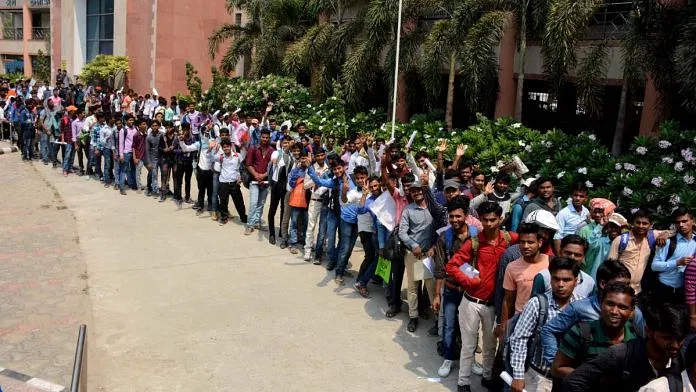The following musing is taken from ‘The Liberal Budget’ published by the Indian Liberal Group for the year 2007-08, titled ‘Taking Reforms to the Poor’. The text reproduced below is the introduction of its third chapter on Post Reform Labour and Employment Issues.
In light of the 2024 budget being presented by the newly formed government this month, which aims to address the ever increasing problem of unemployment in the country, this aspiring liberal budget gives some much needed perspectives on the challenges and opportunities that we are faced with.
Being a populous country, lndia has had to face the perennial problem of labour and employment. Providing employment to the millions of job seekers has been a major challenge for our planners since the beginning of India’s planning process. Till the economy remained closed (mid-80s and more particularly the beginning of the 90s) under the socialistic pattern model, employment generation and labour protection was an overriding goal. Particularly, the organized sector was legally obliged to protect employment in return for protection from competition. The interventionist regime created a complex web of labour laws and extensive executive machinery. This resulted in a well-laid framework seeking to provide security of tenure of employment in the organized sector while largely ignoring similar efforts in the unorganized and small-scale sectors.
The economic scene started changing in the nineties. The New Economic Policy (NEP) introduced stabilization and structural adjustment programmes. Stabilization measures basically aimed at controlling fiscal balance, balance of payment deficit and maintaining lower inflation while structural programmes focused on measures for integrating the domestic economy with the global economy, productivity enhancement, and higher movement of capital. This exposed the economy to both domestic and global competition. During the post reforms period labour-saving modern technology was adopted by industry in order to attain higher goals in terms of quality and quantity, while de-reservation led to increasing the scale of the economy. These measures in turn resulted in higher output but lower employment generation particularly in the organized sector. As a result, the higher growth achieved during the post-reforms period without a corresponding rise in employment was termed as ‘jobless-growth’. Even as the protection given to the organized sector was taken away under the new policy framework, labour law rigidities remained unchanged. This started the conflict between employers and employees.
As the employment generation potential of the organized sector started waning, labour started moving into the unorganized sector. This in turn led to an increase in the number of those engaged in low quality employment (lack of decent jobs) and other related issues. The growing unorganized sector also became a source of income inequalities in the country.
After a decade and half of reforms, lndia is at the crossroads. It is high time to complete the unfinished agenda of reforms by adopting a second dose of hardcore reforms including the labour reforms. At the same time, demographic changes resulting in a growing proportion of economically active younger population, throws a major challenge as well as an opportunity for the economy. The trade off between capital intensive (higher productivity) and labour intensive (employment generating) techniques adds to the complexities. Simultaneously, the problems of child labour, and gender bias in the labour market continue to bother.
In the post-reform period, lndia has embarked on a high growth path leaving behind a Hindu growth rate of 3.5%. Today the economy is capable of posting a sustained growth of 8%. Most importantly, our policy makers have realized the significance of ‘inclusive growth’. The draft Approach Paper to the 11th Five Year Plan mentions that “…the 11th plan provides an opportunity to restructure policies to achieve new vision of growth that will be much more broad-based and inclusive..”
Labour and employment issues in our economy cannot be seen in isolation. On the contrary they are closely connected to the issues of income and poverty levels and overall developmental policies – the topics dealt separately in this edition of the Liberal Budget.
With this background, we attempt to briefly analyse the issues relating to labour and employment particularly during the post-reforms period and also try to find out solutions in broad terms. The chapter is broadly divided into three parts. The first part deals with the structural changes in the labour and employment scene in India. The second part discusses the imperatives inherent in the problem while the last part deals with the challenges posed by these problems
Read the complete chapter here (pages 23-30)

